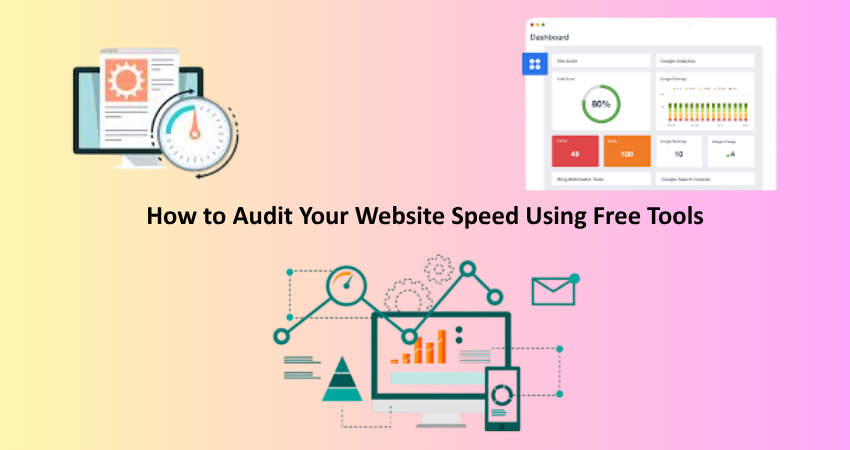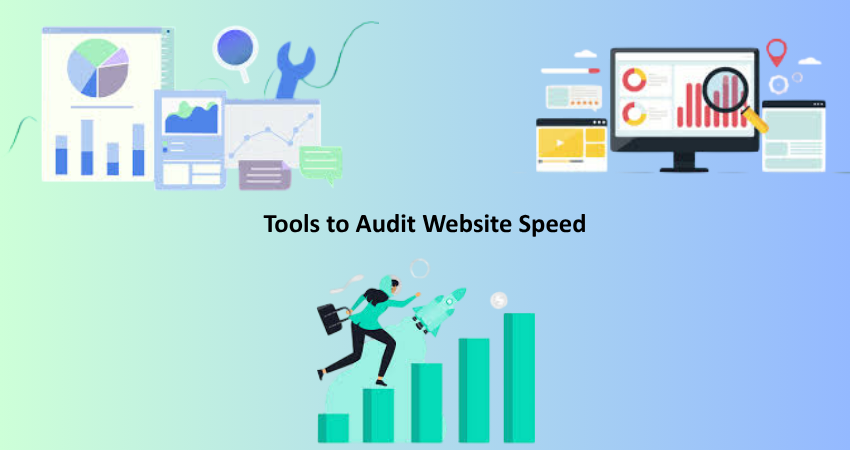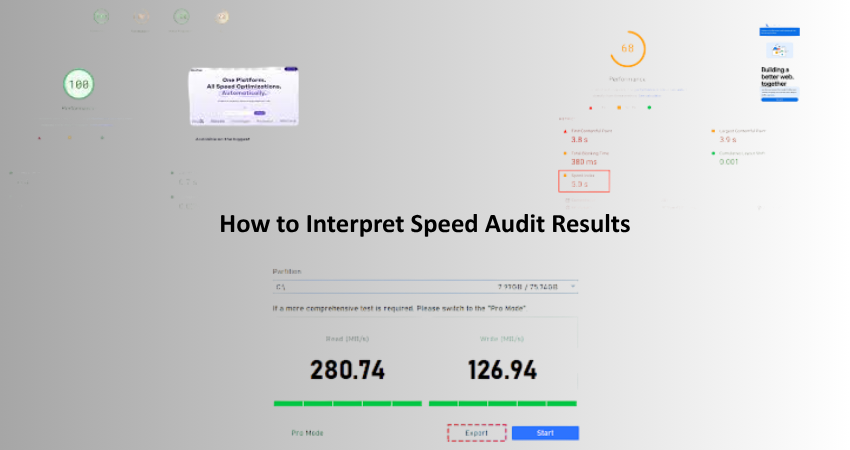
Introduction
According to studies, speed becomes one of the major factors that influence user experience and ranking in search engines as well as in overall site performance. In an era where users demand immediate information access, slow-loading sites would mean a higher chance that visitors would bounce. Your site becomes a lost opportunity regardless of the quality of content or products. Even if the best quality of content is available or what you sell are the best there is, if your website doesn’t load quickly enough, you will lose users to faster competitors. Speed audit for your website is not merely a technical exercise-it’s a step toward stratification in the making since it helps ensure that your site is optimized for use across devices and network conditions.
Gladly, auditing your website speed does not always have to be costly and very sophisticated to manage. Many great provided free tools would give comprehensive insight into how well your website performs for you to identify certain parameters you should be improving. The said tools measure details like page load time, TTFB, render-blocking resources, etc. Well, understanding and acting on those data would enable webmasters, developers, and digital marketers the go to maximize their experience with this offer. This guide will describe some of the best free available tools for Flickr application in the auditing website speed.
Why Website Speed Matters
Impact on User Experience
Speed of the web directly reflects the nature of interaction that users might have with your site. Studies show that a user expects a website to open within two to three seconds. Beyond that, chances are high that the user will leave this site. Even one second of delay could lead to a drastic drop in e-commerce conversion rates. Fast websites usually create a seamless experience, with the user spending time on multiple pages and completing desired actions, such as subscribing to a newsletter or purchasing items.
Speed is essential for mobile usability. Most of today’s web activity occurs on mobile devices, and so quick loading on screen types and network speeds is especially important. Often, people access the internet on a mobile device using a slow connection, making speed optimally important. A site that performs effectively on a desktop and also runs well on mobile is more likely to retain visitors and manage bounce rates, improving user satisfaction and engagement measures.
Influence on SEO Rankings
However, Google itself confirmed the website speed is one of the ranking factors during an update. Fast websites enhance user experience and are crawled and indexed faster by search engine bots. The Core Web Vitals, part of Google’s page experience update, give the most weight to metrics such as Largest Contentful Paint (LCP), First Input Delay (FID), and Cumulative Layout Shift (CLS), all pertaining to the speed and performance of the website.
With a slow website, the SEO efforts get in trouble because Google cannot index very quickly, and the crawl budget of your site is reduced. Fewer pages will then perhaps get indexed, hurting your technology for visibility in search results. Now, if your website is fast, everything works out better for you in terms of ranking higher on SERPs, thus increasing organic traffic and conversion rate. Speed optimization, therefore, makes you work in coherence with updating search engine algorithms while helping you stay competitive online.
Tools to Audit Website Speed

Google PageSpeed Insights
Google PageSpeed Insights is a tool used for measuring the performance of web pages in desktop and mobile views. It displays a score from 0 to 100, alongside specific suggestions for improvement. It checks for various parameters including image optimizations, JavaScript’s execution, and server response time. It also gives real performance metrics using information from Google’s Lighthouse as well as the Chrome User Experience Report.
An interesting note about PageSpeed Insights is its very clear-cut recommendations: it catalogs issues according to the severity of impact and tells you what to do about them. Examples include deferring off-screen images or eliminating render-blocking resources. Working on these will improve your website’s loading speed by a great deal. The tool will also track and enhance Core Web Vitals, performance metrics focused on the end user experience in your site.
GTmetrix
It also be known as GTmetrix, a powerful site speed auditor that uses Google’s Lighthouse data and its own to draw together very detailed performance audits and reports. It provides metrics such as Fully Loaded Time, Total Page Site Size, and the number of requests queued for loading. Apart from such metrics, it contains visual tools such as waterfall charts and video playback to show how each resource has had an impact on page load time.
GTmetrix is unique in the sense that it can test your site from different geographical locations and different browsers. This ensures that global companies can highlight and detect region-specific performance issues. GTmetrix gives recommendations on optimizing CSS, JavaScript, and image assets. While some features are only available via the premium plan, the free version provides plenty of insight for most small to medium-sized sites.
Additional Free Tools for Speed Auditing
WebPageTest
WebPageTest is a versatile tool for testing web performance from many different angles. It allows for web tests to be run from different locations, different browsers, and different connection speeds. This tool gives an almost surgical level of detail into every single step during the loading process, giving times for TTFB, start render, and document complete. It also has great visual aids like film strips and waterfall charts, which allow users to easily see the identified bottlenecks and set priorities for optimization.
WebPageTest stands out in doing advanced tests such as Content Security Policy checks, Lighthouse audits, and comparative testing under different configurations. It allows scripting for automated testing scenarios, which is highly useful for the more technically minded and developers. Although the interface might initially seem a little too complex for the non-programmer, the sheer volume of information which one can extract makes WebPageTest a necessary weapon in the armory of anyone wishing to undertake a serious audit of their website’s speed.
Chrome DevTools
Chrome DevTools is an in-built application based in the new browser Google Chrome which enables an individual to inspect elements, monitor network activities with respect to performance at the same time. With the help of its “Performance” tab in DevTools, one can obtain a timeline depiction when their website is loading, capturing ways showing critical rendering paths, JavaScript executions, and layout shifts, of which knowing essential scripts or resources slowing down your site will become possible.
Apart from that, one of the major advantages associated with the application would be real-time debugging. In such cases, throttling the network speed can simulate slower connection speeds. Therefore, you could use this tool to emulate the device type and even record performance traces as an analytical method for complex issues. It does not offer an intuitive scoring system such as that provided by PageSpeed Insights, but the fine level of detail and control makes this kind of tool essential for in-depth attack and optimization.
How to Interpret Speed Audit Results

Understanding Key Metrics
Understanding the major metrics that the majority of speed audit tools use is essential when auditing the speed of your site. Indicators such as first contentful paint (FCP), largest contentful paint (LCP), time to interactive (TTI), and cumulative layout shift (CLS) together make a complete collection about the time it takes for your visitors to start using your website. Each of these is different from the other because it gives you information on different aspects of the loading experience: the first content appearing to the interactivity.
For instance, FCP indicates that the first piece of content is available to display on the screen, while LCP focuses on when the largest element in the view becomes visible. TTI indicates the moment while TTI deals with visual stability during load; it portrays a page that is already available for full-interaction view. With an understanding of this array of metrics, one can assess single areas that need improvement rather than simply assessing overall performance scores.
Prioritizing Optimization Tasks
So far, we have made some performance measurements, and the following will be on how to prioritize optimization efforts according to impact and ease of implementation. Most tools classify things under high, medium, or low priority. Start with the highest impact ones-the low hanging fruit for optimization, such as images that are large, server response time reductions, and elimination of render-blocking scripts. These changes typically yield visible performance increases.
A balance must also be struck between what technically ought to be done and what actually can be done with the resources available. Setting up a CDN, for instance, might speed things up significantly, but it could take some budget or that extra technical know-how to put into place. Start with something simple, like turning on browser caching and compressing assets, and then work your way into the more difficult stuff. Regularly returning to look at the results from your audit helps track progress along the way so that your site can be optimized as the content and technologies change.
Conclusion
Auditing the speed of your website is probably the most important practice out there for keeping a website highly performing, user friendly, and SEO oriented. Free tools such as Google PageSpeed insights, GT Metrix, WebPageTest, and Chrome DevTools allow you to see how your site holds up against the competition and what action steps can be taken to improve performance. Not only do these tools show all the technical problems associated with your website, but they also lead you into solutions that really can make a difference in load times and how much satisfaction users get from the interface.
If you understand the metrics relevant to your site then it is possible to work with optimization priorities based on the size of impact to spend effort on implementations sparser with less overwhelm on your development resources. A faster and more reactive site would ultimately increase visitor traffic and consequently higher visitor sales conversions as well as excellent placements for search engines. A fast website would also allow a customer to get more and more results out of his search. Make speed auditing an integral component of your website-maintenance routine so you can prepare it for digital success and better-than-ranking user experience through the long haul.